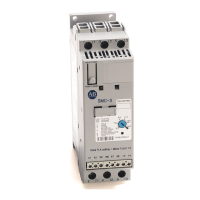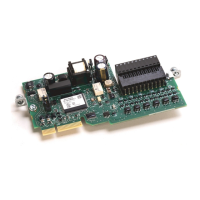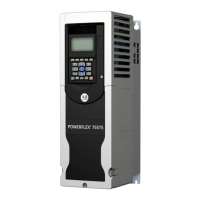4 Rockwell Automation Publication 150-QS003E-EN-P - April 2017
Preface
General Precautions
WARNING:
• Only personnel familiar with the controller and associated machinery should plan or implement the installation, startup, and subsequent
maintenance of the system. Failure to do this may result in personal injury and/or equipment damage.
• Hazardous voltage is present in the motor circuit even when the SMC-50 controller is off. To avoid shock hazard, disconnect the main power before
working on the controller, motor, and control devices such as Start-Stop push buttons. Procedures that require parts of the equipment to be
energized during troubleshooting, testing, etc., must be performed by properly qualified personnel, using appropriate local safety work practices
and precautionary measures.
• Failure of solid-state power switching components can cause overheating due to a single-phase condition in the motor. To prevent injury or
equipment damage, the use of an isolation contactor or shunt trip-type circuit breaker on the line side of the SMC controller is recommended. This
device should be capable of interrupting the motor’s locked-rotor current.
• Hazardous voltages that can cause shock, burn, or death are present on L1, L2, L3, T1, T2, and T3. For Internal bypass units, hazardous voltages are
also present on T4, T5, and T6. Power terminal covers for units rated 90…180 A (solid state) and 108…480 A (integrated bypass) can be
installed to prevent inadvertent contact with terminals. Disconnect the main power before servicing the motor controller, motor, or associated
wiring.
ATTENTION:
• Static control precautions are required when you install, test, service, or repair the assembly. The controller contains electrostatic discharge (ESD)
sensitive parts and assemblies. Component damage may result if ESD control procedures are not followed. If you are not familiar with static
control procedures, See applicable ESD protection handbooks.
• Stopping modes, such as braking, are not intended to be used as an emergency stop. You are responsible for determining which stopping mode is
best suited to the application. See the applicable standards for emergency stop requirements.
• Pump and linear deceleration stopping modes may cause motor heating. Depending upon the mechanical dynamics of the system, select the
lowest stopping time setting that satisfactorily stops the motor.
• Slow speed running is not intended for continuous operation. This is due to reduced motor cooling.
• Two peripheral devices can be connected to the direct programming interface (DPI™) port that is located in the control module. The maximum
output current through the DPI port is 560 mA.
NOTE: A Human Interface Module (HIM) located in the control module HIM port/bezel (See Figure 9
) also draws power from the DPI port.
• Disconnect the controller from the power source when installing or inspecting protective or capacitor modules. These modules should be
inspected periodically for damage or discoloration. Replace module if it is damaged or the clear sealant or components are discolored.
• Additional considerations may be required for EMC compliance. See SMC-50 Controller User Manual, publication 150-UM011.

